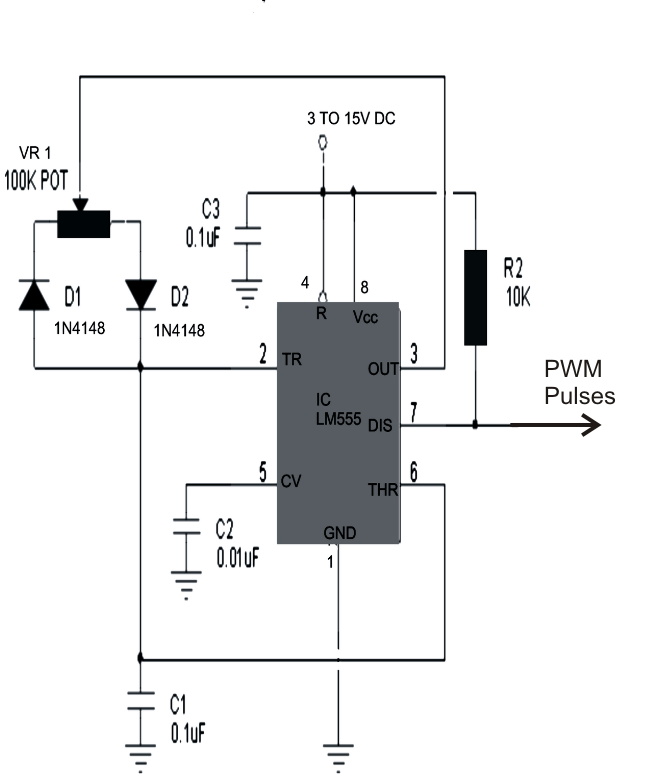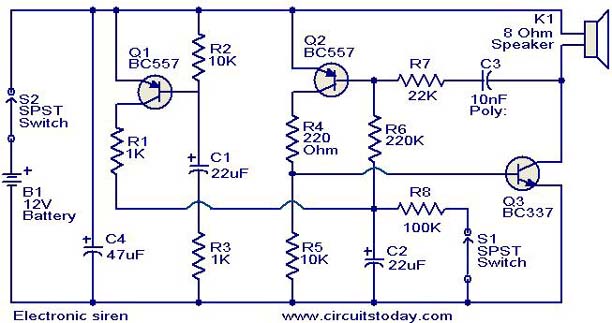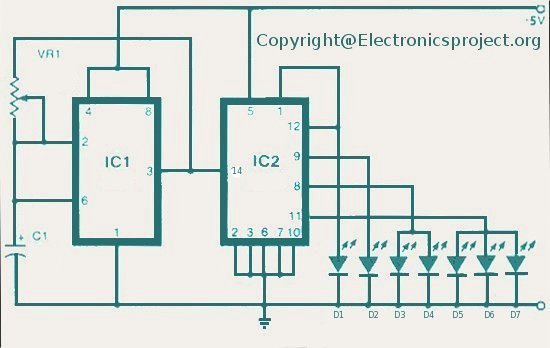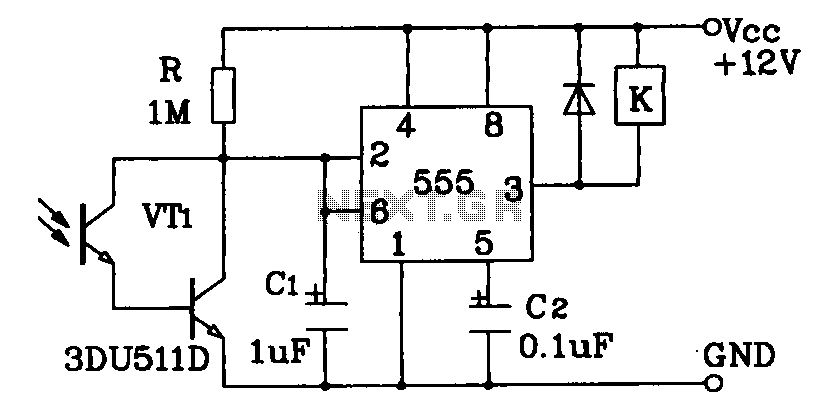
Make This 1KVA (1000 watts) Pure Sine Wave Inverter Circuit

The configuration presented in the diagram below is a simple MOSFET-based design intended for amplifying current at ±60 volts, allowing the connected transformer to generate a required output of 1 kVA. The components Q1 and Q2 form the initial differential amplifier stage, which elevates the 1 Vpp sine signal at the input to a level suitable for triggering the driver stage composed of Q3, Q4, and Q5. The MOSFETs are arranged in a push-pull format, effectively alternating the entire 60 volts across the transformer windings at a frequency of 50 Hz, resulting in a transformer output of 1000 watts AC at mains voltage. To achieve the desired pure sine wave output, an appropriate sine input is necessary, which is provided by a simple sine wave generator circuit. This circuit consists of a couple of operational amplifiers and several passive components, operating at voltages between 5 and 12 volts. This voltage should be adequately supplied from one of the batteries used to power the inverter circuit. The diagram below illustrates a simple sine wave generator circuit that can be utilized to drive the inverter circuit. However, since the output from this generator is inherently exponential, it may lead to significant heating of the MOSFETs. A more effective solution would be to incorporate a PWM-based circuit that delivers optimized PWM pulses equivalent to a standard sine signal.
The described circuit employs a MOSFET configuration to achieve efficient amplification of the input signal. The differential amplifier stage (Q1 and Q2) plays a crucial role in increasing the voltage of the input sine wave, preparing it for the subsequent driver stage. This stage, consisting of MOSFETs Q3, Q4, and Q5, is responsible for the push-pull operation, which alternates the current through the transformer. The push-pull arrangement is essential for maintaining balance and efficiency in the circuit, ensuring that the transformer receives the full 60 volts required for optimal performance.
The transformer is designed to convert the amplified electrical energy into usable AC power, specifically targeting a 1 kVA output. The frequency of operation, set at 50 Hz, aligns with standard mains frequency, making the system suitable for typical power applications. The sine wave generator circuit, crucial for providing the necessary input signal, employs operational amplifiers to shape the waveform. Careful selection of passive components within this circuit is vital to ensure that the output closely resembles a pure sine wave.
To mitigate the heating issues associated with the exponential output of the sine wave generator, the integration of a PWM circuit is recommended. PWM, or Pulse Width Modulation, allows for the generation of a signal that can effectively emulate a sine wave while minimizing heat generation in the MOSFETs. This approach not only enhances the efficiency of the inverter circuit but also prolongs the lifespan of the components by reducing thermal stress.
In summary, the presented MOSFET-based inverter circuit is a robust solution for converting DC power from batteries into a stable AC output. The careful design of the amplifier stages, transformer coupling, and sine wave generation ensures that the system operates efficiently and reliably within the specified parameters.As can be seen in the first diagram below, the configuration is a simple mosfet based designed for amplifying current at +/-60 volts such that the connected transformer corresponds to generate the required 1kva output. Q1, Q2 forms the initial differential amplifier stage which appropriately raises the 1vpp sine signal at its input to a level whic
h becomes suitable for initiating the driver stage made up of Q3, Q4, Q5. The mosfets are also formed in the push pull format, which effectively shuffles the entire 60 volts across the transformer windings 50 times per second such that the output of the transformer generates the intended 1000 watts AC at the mains level. For acquiring the intended pure sine wave output, a suitable sine input is required which is fulfilled with the help of a simple sine wave generator circuit.
It is made up of a couple of opamps and a few other passive parts. It must be operated with voltages between 5 and 12. This voltage should be suitably derived from one of the batteries which are being incorporated for driving the inverter circuit. The below given diagram shows a simple sine wave generator circuit which may be used for driving the above inverter circuit, however since the output from this generator is exponential by nature, might cause a lot of heating of the mosfets.
A better option would be to incorporate a PWM based circuit which would supply the above circuit with appropriately optimized PWM pulses equivalent to a standard sine signal. 🔗 External reference
The described circuit employs a MOSFET configuration to achieve efficient amplification of the input signal. The differential amplifier stage (Q1 and Q2) plays a crucial role in increasing the voltage of the input sine wave, preparing it for the subsequent driver stage. This stage, consisting of MOSFETs Q3, Q4, and Q5, is responsible for the push-pull operation, which alternates the current through the transformer. The push-pull arrangement is essential for maintaining balance and efficiency in the circuit, ensuring that the transformer receives the full 60 volts required for optimal performance.
The transformer is designed to convert the amplified electrical energy into usable AC power, specifically targeting a 1 kVA output. The frequency of operation, set at 50 Hz, aligns with standard mains frequency, making the system suitable for typical power applications. The sine wave generator circuit, crucial for providing the necessary input signal, employs operational amplifiers to shape the waveform. Careful selection of passive components within this circuit is vital to ensure that the output closely resembles a pure sine wave.
To mitigate the heating issues associated with the exponential output of the sine wave generator, the integration of a PWM circuit is recommended. PWM, or Pulse Width Modulation, allows for the generation of a signal that can effectively emulate a sine wave while minimizing heat generation in the MOSFETs. This approach not only enhances the efficiency of the inverter circuit but also prolongs the lifespan of the components by reducing thermal stress.
In summary, the presented MOSFET-based inverter circuit is a robust solution for converting DC power from batteries into a stable AC output. The careful design of the amplifier stages, transformer coupling, and sine wave generation ensures that the system operates efficiently and reliably within the specified parameters.As can be seen in the first diagram below, the configuration is a simple mosfet based designed for amplifying current at +/-60 volts such that the connected transformer corresponds to generate the required 1kva output. Q1, Q2 forms the initial differential amplifier stage which appropriately raises the 1vpp sine signal at its input to a level whic
h becomes suitable for initiating the driver stage made up of Q3, Q4, Q5. The mosfets are also formed in the push pull format, which effectively shuffles the entire 60 volts across the transformer windings 50 times per second such that the output of the transformer generates the intended 1000 watts AC at the mains level. For acquiring the intended pure sine wave output, a suitable sine input is required which is fulfilled with the help of a simple sine wave generator circuit.
It is made up of a couple of opamps and a few other passive parts. It must be operated with voltages between 5 and 12. This voltage should be suitably derived from one of the batteries which are being incorporated for driving the inverter circuit. The below given diagram shows a simple sine wave generator circuit which may be used for driving the above inverter circuit, however since the output from this generator is exponential by nature, might cause a lot of heating of the mosfets.
A better option would be to incorporate a PWM based circuit which would supply the above circuit with appropriately optimized PWM pulses equivalent to a standard sine signal. 🔗 External reference





